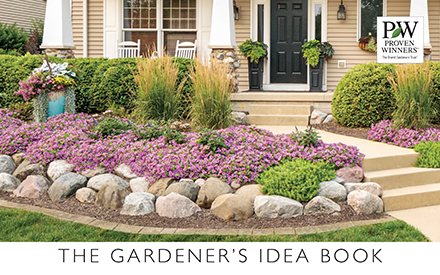Shade - Sometimes "Bad" can be SO Good
Learn how "Bad" shade areas can be real assets in your garden.
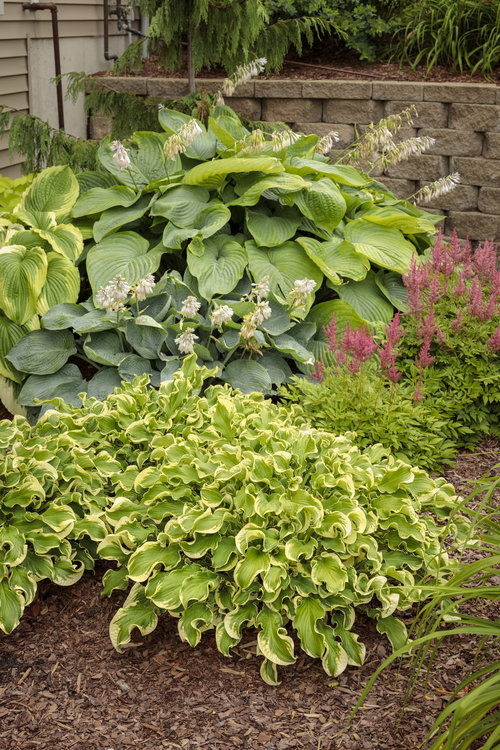 Basic information on the different types of shade you might encounter in your garden has already been covered in the article Shade - The Good, The Bad and The Ugly. We've also already covered how to make the best of "Ugly" shade. In this article, we are tackling strategies and plants to use in "bad" shade areas.
Basic information on the different types of shade you might encounter in your garden has already been covered in the article Shade - The Good, The Bad and The Ugly. We've also already covered how to make the best of "Ugly" shade. In this article, we are tackling strategies and plants to use in "bad" shade areas.
We previously defined "bad" shade as areas in your garden that get no direct light, but would not be considered dark and areas that have nice bright light, but complicating factors such as deep trees roots that make gardening more difficult. This article has more complete information on what constitutes "bad" shade.
Plant Selection
The good news is that "bad" shade actually has a reasonable plant palette from which to choose. All of the plants that do well in "ugly" shade will also work for "bad" shade areas. So, English ivy, Liriope, Ferns, Ajuga (Bugleweed), Lily-of-the-Valley and the rest will work well in "bad" shade as well as "ugly" shade. However, they aren't the only plants that will work.
Hosta, one of the true shade stalwarts, is an excellent choice for "bad" shade conditions. They come in almost every conceivable size, from tiny ('Mighty Mouse' is 8 inches tall) to huge ('Empress Wu' can get close to 4 feet tall) and range in colors from blue to green to variegated. Foliage size also varies from small to huge and you can even get ruffled types, Wheee! is one example. They are hardy to at least zone 4 and often to zone 3.
Heuchera (Coral Bells) is another good choice. They need to be watered regularly to really do their best, but they will do well in this level of light. They are usually hardy to zone 4, check plant tags or on-line profiles for information for each specific variety. Heucherealla and Tiarella are closely related to Heuchera and are also excellent choices.
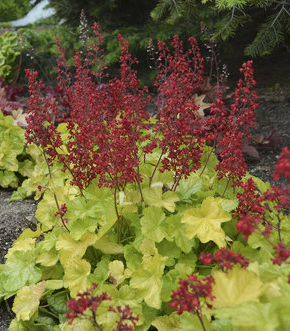 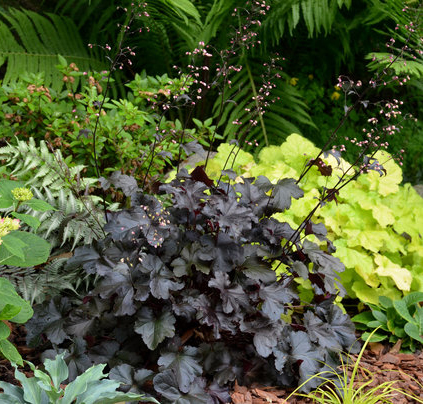 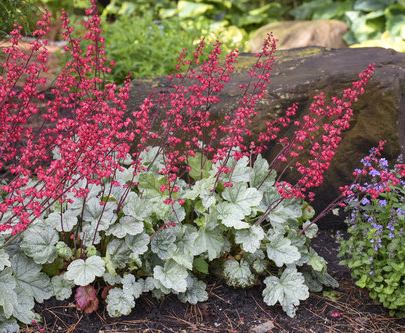 |
For very early color, Helleborus (Lenten Roses) are the way to go. They bloom before winter has melted into spring and with zone 4 or 5 hardiness (check the plant tag for specific information) are also quite cold tolerant. If you are planting under or near deciduous trees, spring flowering bulbs such as daffodils, tulips and grape hyacinths will bloom before the trees leaf out and create the shaded environment. If you plant other perennials near the bulbs, such as Hosta, as the perennials grow they will cover the aging and unsightly bulb foliage.
Astible (False Spirea) and Dicentra (Bleeding Heart) are two other great choices. Their color ranges are similar - white to pink to red, with Astilbe also providing peach colored flowers. Both are quite hardy, Astilbe generally to zone 4 and Dicentra to zone 3.
In the shrub category, Hibiscus syriacus (Rose of Sharon) will also flower in dense shade conditions, although not as well as it does with more light. Rose of Sharon is hardy to zone 5, but perhaps the biggest point in its favor is the ability to tolerate dry conditions easily.

Another shrub that shrugs off dry conditions is Kerria. Kerria sports bright yellow flowers in spring with some reblooming throughout the year. Kerria is hardy to zone 5, has small toothed foliage and distinctive green stems. If you are looking for an evergreen that will tolerate dry shade, Microbiota Celtic Pride™ fits the bill. It is extremely cold tolerant, to zone 2.
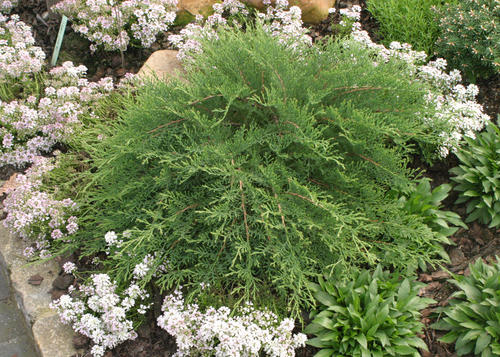
There are also a number of annuals that will work in "bad" shade. Tuberous Begonias, Impatiens and Torenia are three great choices. Impatiens come in several different types including New Guinea Impatiens such as our Infinity® series, Double Impatiens such as our Rockapulco® series, and bedding Impatiens. Impatiens are available in pretty much every color, except blue and yellow. While most people are familiar with Begonias and Impatiens, you may not be as familiar with Torenia (Wishbone Flower). Torenia are great shade annuals and they love the heat. Sutera (Bacopa) can also be used in shade. Sutera won't flower as strongly in the shade as it does in sun, but it will do well.
If you are looking for color it is hard to go wrong with coleus (Solenostemon). Coleus are grown for their foliage, which comes in a wide range of colors. Most of the newer coleus to be introduced to the market will work in both sun and shade, our ColorBlaze® series is one example. Coleus foliage colors will vary depending on the amount of sun versus shade the plant receives. In general, foliage colors will be richer in sunnier spots and more subdued in shadier spots. However, some coleus with light foliage can be susceptible to sunburn and will look best when grown with more shade. Coleus will also be more compact and look fuller with a bit more sun. However, one of the great things about Coleus is that if they start to look stretched, you can simply trim them back and they will regrow with better branching.
Strategies
Many of the strategies to use in "bad" shade areas are similar to those used with "ugly" shade. Fortunately, improving "bad" shade is much easier than improving "ugly" shade.
Dense Shade
Adding More Light
Dense shade is almost always a function of trees, rather than structures. Usually if a structure is involved, you are really talking about "ugly" shade conditions. Trees create "bad" shade instead of "ugly" shade, because some light will penetrate even a dense tree canopy. If a structure is involved all light can, essentially, be blocked. The good news is that improving light under a tree canopy is as easy as trimming trees so that more light can penetrate. As we discussed in the "ugly" shade article, this is often referred to as limbing up. Limbing up is removing lower growing branches to raise the canopy. Raising the canopy will allow more light to filter to the ground. My husband has done this to all of our trees and it is one of the best things we've ever done for our garden.
If you do decide to trim or limb up your trees, I would highly suggest having a professional certified arborist do the job. Limbing up can include removing some pretty major limbs of trees. This can be dangerous, especially if you are not used to working with the power tools necessary for the job. It is also easy to accidentally injure your trees to the point where they do not recover. A certified arborist can not only safely use the power tools, but will also know how to prune the trees without harming them. This is probably not a job you want to trust to someone that isn't truly knowledgeable and is one area where looking for the cheapest option may not be the best decision.
Create a Woodland Garden
There are plants that are tailor-made to thrive under dense tree canopies and using these plants to create a garden that suits your conditions is a great option. Plants for woodland gardens often bloom in early spring before deciduous trees leaf out or in fall after the leaves have fallen. A good place to start when designing a woodland garden is genera that are native to your area. These plants will be well suited to your climate. Spring blooming bulbs are a staple in woodland gardens as are ferns, Solomon's seal, Trillium, bloodroot, Tricyrtis (Toad Lily) Dicentra such as Dutchman's breeches and bleeding heart, and Cimicifuga.
Woodland gardens won't necessarily be lush, but they can be beautiful. I would also plan on installing benches or other furniture in this type of shade. These gardens are wonderful places to relax and read a good book.
Garden Art and Hardscaping
Color can also be added to dense shade by using colorful statuary, pots and other accents. Adding hardscaping elements to dense shade can also improve how often you utilize these spaces. Garden art and hardscaping are covered in more detail in the "ugly" shade article.

Tree Roots
Even after trimming trees to improve the light in a dense shade area the challenges aren't over. Tree roots will still make gardening more challenging than what you encounter in a sunny garden. Making the Best of "Ugly" Shade covers several strategies for dealing with tree roots. In that article, we dealt specifically with shallow rooted trees. Shallow rooted trees are more difficult to deal with than trees with deeper roots. The stratgies suggested for shallow rooted trees are certainly applicable to more deeply rooted trees. However, deeper rooted trees do open up your options to some extent.
With deeply rooted trees, it is possible to plant in the soil under the trees without taking the extra measures mentioned in the "ugly" shade article. You will have to contend with tree roots, but the right plants can do fine once established. I have Hostas planted under deeply rooted trees. I had to watch for large tree roots when planting, but now that they are established they perform quite well, although they do require more supplemental water than the plants not competing with tree roots.
A ny time you garden under trees, your annuals, perennials and shrubs will have to deal with the big bully in the neighborhood, your trees. All of the plants will be fighting to get their fair share of the available water and nutrients. You can greatly improve your success rate by choosing plants that will tolerate dry conditions and by adding supplemental water. Since you are really trying to, specifically, boost the performance of the plants you have placed under the tree canopy, I suggest using a drip irrigation system to deliver water directly to those plants. Drip irrigation systems will save water while targeting the plants you want to help. Drip irrigation will involve extra effort and, potentially, expense to setup initially, but should pay off in the longrun. This article has more on irrigation options.
ny time you garden under trees, your annuals, perennials and shrubs will have to deal with the big bully in the neighborhood, your trees. All of the plants will be fighting to get their fair share of the available water and nutrients. You can greatly improve your success rate by choosing plants that will tolerate dry conditions and by adding supplemental water. Since you are really trying to, specifically, boost the performance of the plants you have placed under the tree canopy, I suggest using a drip irrigation system to deliver water directly to those plants. Drip irrigation systems will save water while targeting the plants you want to help. Drip irrigation will involve extra effort and, potentially, expense to setup initially, but should pay off in the longrun. This article has more on irrigation options.
Here are some key things to remember, you cannot install a raised bed over the roots of the tree. First of all, the roots are likely to grow into the new soil and if they don't a thick layer of new soil can smother the roots and ultimately kill the tree. You can mulch over the top of the roots, however, don't put the mulch layer more than 2 to 4 inches thick. Mulching too deeply can also smother your trees roots and potentially kill it.
Don't forget, shade is a wonderful element to have in your garden, especially during the summer heat. Embrace what the shaded areas of your garden add, rather than keying on what you cannot do. With this attitude, you will begin to love your shade areas as much as you love your sunny spots. You may love these two aspects of your garden for different reasons, but you will, nevertheless, enjoy them both.
Patent Info: Empress Wu' Hosta hybrid PP: 20774 Can. PBRAF; Wheee! Hosta hybrid PPAF;




